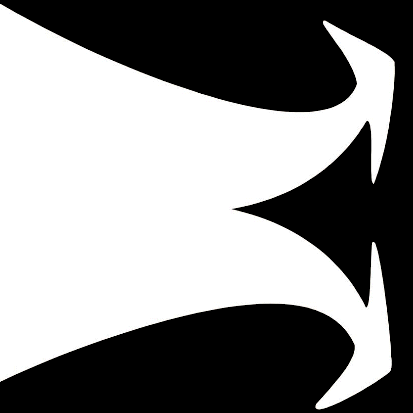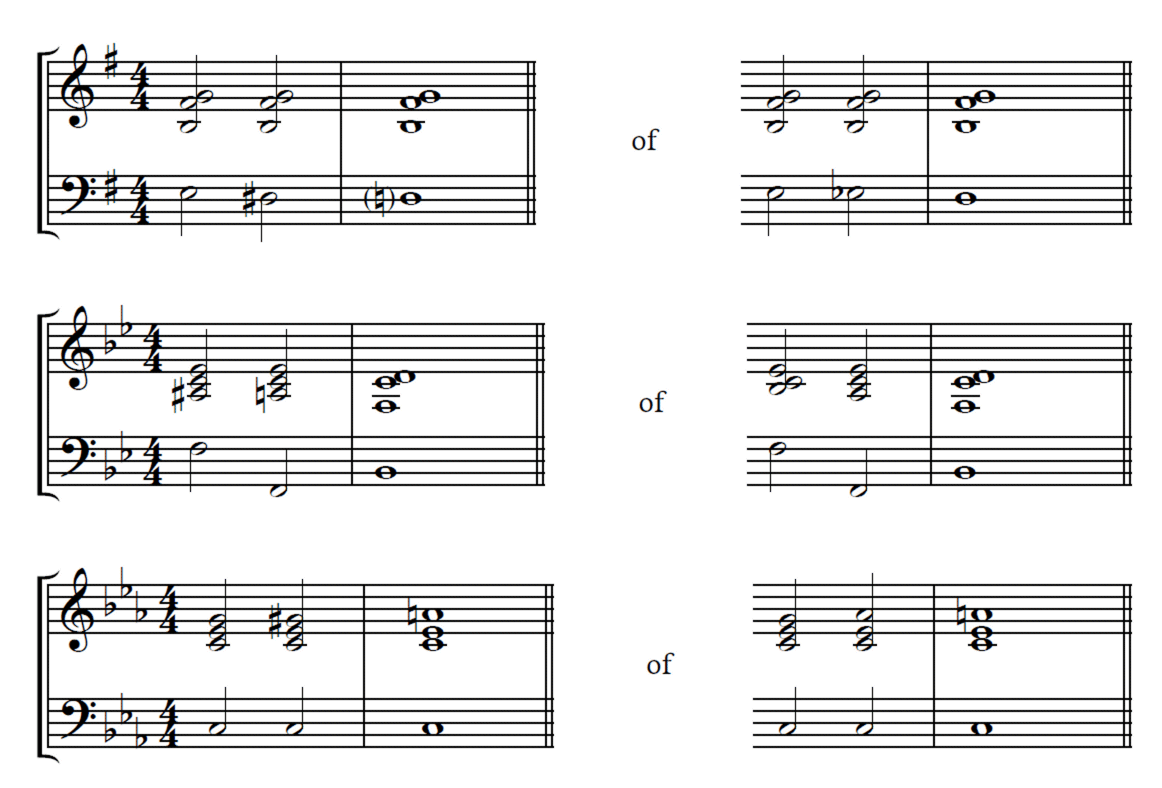 Here is part two of the exercises in which you have to chose between notating a sharp or a flat.
Here is part two of the exercises in which you have to chose between notating a sharp or a flat.
The exercise looks like this. Indicate whether the left or right version is more correct:

Here are the exercises as a pdf file and the answers.
Explanation:
- The second chord may be interpreted in more than one way. It might be a
EM^9
or anB<6/D#
. In both ways the bottom note is C-sharp and not D-flat. The latter hardly ever occurs in E-minor. - The first chord is
F7sus4
. In that chord there is a four instead of a heightened three, thus it should be B-flat and not A-sharp. - In this case both answers are possible. You might interpret the second chord as a
CM>5
, but as well as aA@/C
. Personally I prefer G-sharp, because in my view the chordCM
is sounding and the fifth is shifting chromatically. - You might describe this harmony in two ways. Some musicians call this a power chord (a chord without a third) plus a ninth. Others call this an
Esus2
. In any case, the addition has to be interpreted as a second (F-sharp) instead of a lowered third (G-flat). - The finale chord is
D6
. The addition thus is a B and not a C-flat. - In this case both versions are possible. Theoretically actually the second option is better. Mostly the chord is interpreted as an
F7>9
. The sharp-ninth should be notated as a G-sharp. Yet most pianists prefer to write an A-flat, because that note a more easy to read in the key ofB@
. In the Netherlands the harmony is usually notated as anF7-10
orF7<10
. But in the Anglian countries musicians hardly ever use this addition, so for the Dutch I don’t recommend this use.